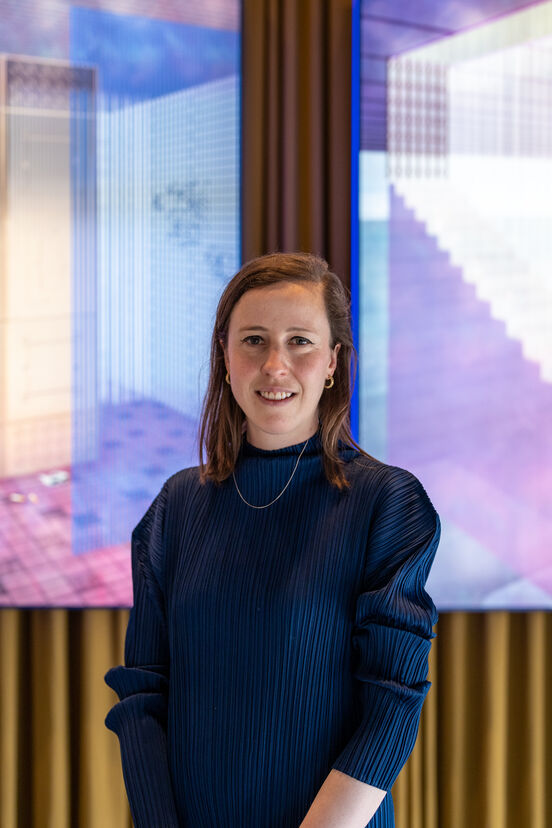Interview with Raphaela Rose
Toro Whakaara: Responses to our built environment
Raphaela Rose: I am an architect and designer working across the disciplines of architecture, design and art. I was born in London and raised in Tāmaki Makaurau where I am currently based. I work across a variety of scales and forms both physically creating things and making things happen, from speculative projects to installations, from buildings to urban realm interventions. Across my work I aim to push alternative modes of architecture practice in an attempt to work democratically and collaboratively. My practice examines the social implications of space specifically in relation to politics and gender, enabling work that is grounded and responds appropriately to the wider systems and context in which it operates.
Objectspace: The exhibition was catalysed by the idea of hostile architecture. This provocation suggests that our experience of the built environment and place can be fraught – in a state of tension that prioritises some people’s needs over others’, and at odds with the natural world. What experiences do you have of hostile architecture in your daily life?
RR: Notions of hostile architecture surround us in a contemporary age. The modern condition of zoning and regulations has given legitimacy to the inequitable determination of who has the right to access both public and private space. This has seen the creation of spatial hierarchies which reinforce notions of power, status and social inequity. Take for example the spatial inequalities created by school zones that have tended to be set up to incorporate high socioeconomic areas, thus further contributing to achievement gaps between advantaged and disadvantaged students. Or the notion of our cities being segregated into areas of business and areas of residential neighbourhoods with public transport connecting only in and out of commercial areas. It fails to take into account the modern-day life of working families where people are engaged in unpaid work of child-rearing or caring for relatives in addition to their jobs, often having to sacrifice one over the other in order to make ends meet. As a society we have employed our efforts into using specific architectonics or architectural language to send signals of hostility – take for example public spaces in New York where spikes appear on benches at night-time to prevent people without housing from sleeping there rather than addressing our efforts towards the systematic failures that have enabled homelessness to increase in critical numbers.
OS: Tell us more about your work for Toro Whakaara.
RR: This work explores the public toilet as a site and the ways in which it can be viewed as a spatial typology of exclusionary architecture. Using four public toilets that currently stand or once existed in locations across the central business district of Tāmaki Makaurau as case studies, the work investigates through the dissemination of histories, atmospheres and specific architectonics how the typology of the public toilet is emblematic of the wider forces and players that have controlled our cities. Through research into each site, by way of drawing, extrapolating site atmospheres, identification and formal exploration of architectural elements, a series of speculative spaces has been created, identifying the specific architectural language in each space that has enabled exclusionary tactics. Such spaces reveal how the typology of the toilet is emblematic of a wider societal conversation as to who controls the urban realm and how architecture influences a forced behaviourology. The project aims to bring to light the significance of the public toilet as a form of hostile architecture and how it has allowed specific groups of people to become active participants in the city. Bridging the gap between public and private space, toilets reveal truths around the demographics of our city, its development and the needs of the people who inhabit it. The work questions how the omission of such spaces in the city could be seen as a strategy by authorities to exclude certain members of society from accessing and having a voice in the urban realm. The work manifests as a series of large-scale light boxes, floating within a material curtain. The rigidity of the perimeter frame of the light box acts as a threshold to a speculative space, with the material curtain blurring the boundary of the frame, questioning notions of public and private space. It aims to capture the historical and current narratives of the four sites, revealing the significance of the public toilet in the socio-political of the urban realm and capturing moments that are tender and intimate, sometimes celebratory and at times deeply threatening.
OS: The exhibition captures fragments of the built environment and land use that often go unseen – perhaps because they are so much a part of our everyday experiences. What would you like the viewer to be seeing in your work?
RR: The public toilet as a space provides for the most perfunctory activity performed by every member of society, exposing bodies to the most fragile of states in unaccustomed proximity in pursuit of social acceptability. Although seemingly so essential to our ability to go about our daily lives, the access to such spaces has forever been disputed. I would like the viewer to render visible the immaterial forces that have controlled these spaces and the consequential effects this has had on who it has allowed to be active participants in our cities and political life. Revealing such themes in the context of a space seemingly overlooked I hope will promote a critical interrogation of implicit architectures of exclusion and our accountability as a society to change this otherwise.
This text is republished from Toro Whakaara: Responses to our built environment, a publication produced by Objectspace to accompany an exhibition of the same name. The publication is edited by Tessa Forde, and copy-edited by Anna Hodge.

Portrait of Raphaela Rose in front of her work in Toro Whakaara: Responses to our built environment. Photograph by Seb Charles, 2021.